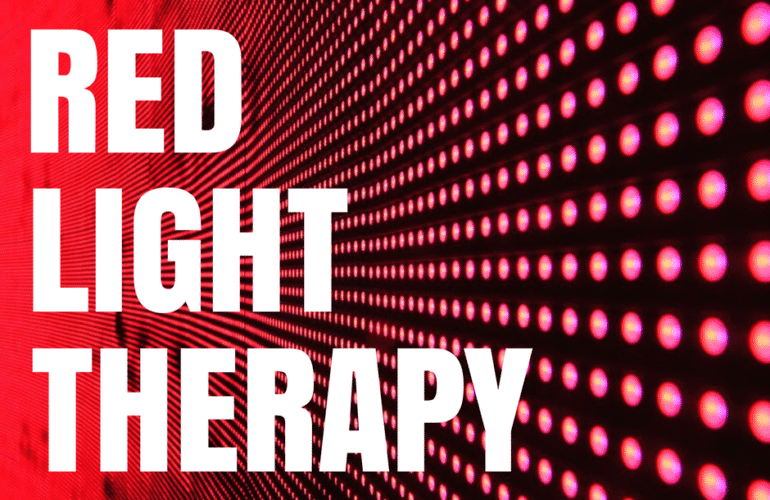6 Major Benefits of Red Light Therapy

Red low-level wavelengths of light are used in the contentious therapeutic practice known as red light therapy (RLT) to treat a variety of skin problems, including wrinkles, scars, and chronic wounds.
RLT was employed by researchers to assist plants in space in the early 1990s. The researchers discovered that the powerful light from red light-emitting diodes (LEDs) encouraged plant cell development and photosynthesis.
The next step was to investigate red light’s potential for use in medicine, especially to see if RLT may boost cellular energy. The researchers believed that RLT might be a successful method of treating muscular atrophy, sluggish wound healing, and problems with bone density brought on by weightlessness in spaceflight muscular atrophy, sluggish wound healing, and bone density concerns induced by weightlessness during space travel.
6 Key Benefits of Red Light Therapy
While the benefits the body can get from red light therapy are endless, here are six main ones.
Pain and Discomfort Relief
Photobiomodulation, in other words, Red Light Therapy, has been shown to be effective for carpal tunnel syndrome, mucositis, neck pain, dysmenorrhea, temporomandibular joint pain, and neuropathic pain from amputation.Additionally, it enhances sensorimotor function while dramatically lessening the discomfort associated with hypersensitivity.
These improvements come after anti-inflammatory cells populate the injured area, providing lasting pain relief. In addition, it has also been shown to provide effective mitigation by affecting the following aspects.
- Suppresses cyclooxygenase and prostaglandins.
- Activates peripheral opioid receptors.
- Increases the release of the endorphin serotonin.
- Stimulate metabolism.
- Altered nerve conduction.
Repair The Skin
Red light therapy has proven to be very effective in quickly treating burns, scars, bedsores, ulcers, surgical incisions, and wounds from diabetic neuropathy.
NASA strongly supports this claim, as the technology is used to treat wounds. Red and near-infrared light proved effective in all four stages of the wound healing process.
- Coagulation
- Inflammation
- Migrate
- Reshape
These processes are regulated by various factors, through nitric oxide (NO) signaling release, by light energy.
One problem the body has when trying to heal wounds is low oxygen flow, and red light increases oxygen flow and speeds up the natural healing process. By reducing inflammation and increasing oxygen levels in the injured area, blood vessels can form, repairing the area quickly and reducing pain and scarring.
By reducing pain, red light therapy eliminates reliance on medicated pain relievers during the healing process.
Restore Immunity
The human body receives energy at the cellular level, maintaining communication between organs and ensuring disease resistance.
A strong immune system protects the body from harmful bacteria and viruses at all times. With red light therapy, the body is supported as it releases nitric oxide and melatonin, two components involved in DNA repair and antibacterial.
This process is called hormonal action. Red and near-infrared wavelengths penetrate the skin into cells, causing mild metabolic stress that stimulates cells to activate their anti-inflammatory and antioxidant responses.
With the support of red light therapy, the body is better prepared to fight infection. Numerous studies have proven that red light therapy has the following effects on the immune system.
- Improve melatonin production
- Raise NO levels
- Improve antioxidant production
- Improve thyroid function
- Stimulate T cells before surgery
- Increase the flow of neurotransmitters
- Promotes production of collagen and elastin
- Encourage lymph node activity
- Enables the transport of immune cells
- Stimulates optimal function of cells and organelles
Reduce Inflammation
Inflammation in the body can be acute and local (short-term, caused by sprains, infections, and accidents) or chronic and systemic (long-term, caused by an ongoing condition).
Acute inflammation is a healthy body response; however, chronic and general inflammation can negatively impact long-term health.
As of now, the current treatments for inflammation are NSAIDs or steroids, both of which have detrimental effects on the healing process and long-term health. Red light therapy stimulates the body to activate its natural healing mechanisms, reducing the health risks of long-term medication use.
Red light therapy reduces the number of inflammatory cells, increases the proliferation of fibroblasts (cells that synthesize collagen and other matrix macromolecules), stimulates angiogenesis (creation of new blood vessels), and activates the body’s anti-inflammatory, antioxidant reaction.
The following conditions are associated with both chronic and acute inflammation and have all demonstrated excellent results with red light therapy.
- Arthritis
- Asthma
- Sinusitis
- Muscle sprain
- Fibromyalgia
- Neuronal inflammatory diseases such as Alzheimer’s
- Irritable Bowel Syndrome and Colitis
- Rheumatism
Restore Performance
Red light therapy is extremely popular in competitive sports and performances. It offers natural and non-drug treatments for many areas of the body.
In addition to its great benefits for overall health, Red Light Therapy promotes muscle growth and repair by stimulating ATP production, which contributes to faster recovery and better performance.
Red light therapy used before training can prepare and strengthen the body while helping muscles recover after training.
Here are the scientifically backed effects of red light therapy.
- Reduces DOMS (Delayed Onset Muscle Soreness).
- Enhanced endurance and performance
- Improve sleep quality
- Improve sexual function and libido (including testosterone).
- help lose weight
- Improve cognitive function
- Reverse skin aging
- Reduce cellulite